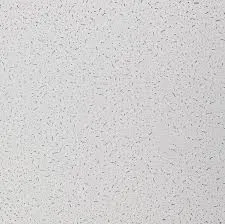- Afrikaans
- Albanian
- Amharic
- Arabic
- Armenian
- Azerbaijani
- Basque
- Belarusian
- Bengali
- Bosnian
- Bulgarian
- Catalan
- Cebuano
- Corsican
- Croatian
- Czech
- Danish
- Dutch
- English
- Esperanto
- Estonian
- French
- German
- Greek
- Hindi
- Indonesian
- irish
- Italian
- Japanese
- Korean
- Lao
- Malay
- Myanmar
- Norwegian
- Norwegian
- Polish
- Portuguese
- Romanian
- Russian
- Serbian
- Spanish
- Swedish
- Thai
- Turkish
- Ukrainian
- Uzbek
- Vietnamese
Dez . 09, 2024 18:46 Back to list
Creating a Tile Grid Ceiling for Stunning Aesthetic Appeal and Design Flexibility
Understanding Tile Grid Ceiling A Modern Solution for Interior Spaces
In the realm of interior design, the tile grid ceiling is rapidly gaining popularity for its sleek aesthetics, functional benefits, and sound-absorbing properties. This innovative ceiling design can be found in various spaces, from commercial buildings to residential homes, making it a versatile choice for architects and designers alike.
One of the primary advantages of a tile grid ceiling is its ability to conceal unsightly ductwork, plumbing, and electrical wiring. In spaces where these installations may detract from the overall design, a tile grid ceiling offers a practical solution by providing an accessible layer that can be easily removed or replaced. This facilitates maintenance and modifications without the need for extensive renovations, thereby saving both time and resources.
Moreover, tile grid ceilings are recognized for their excellent acoustic properties. The tiles used in these ceilings are often designed to absorb sound, reducing noise pollution within a room. This is particularly beneficial in environments such as offices, schools, and hospitals, where a quiet atmosphere is essential for productivity and concentration. By implementing a tile grid ceiling, designers can enhance the auditory experience in these spaces, creating a more comfortable environment for occupants.
tile grid ceiling

In terms of aesthetics, tile grid ceilings offer a modern and clean look that can complement various design styles. Whether you prefer a minimalist approach or a more decorative scheme, tile grid ceilings can be customized to suit your vision. Available in an array of materials, finishes, and colors, these ceilings can meet the diverse needs of any project. From classic white tiles to bold colors and patterns, the possibilities are nearly endless. This adaptability allows designers to create unique and inviting spaces that reflect their personal style or brand identity.
The installation of a tile grid ceiling is generally straightforward, making it an appealing option for many. The grid framework is suspended from the existing structure, and the tiles are then laid into the grid. This process is typically quicker than traditional ceiling construction and often requires less labor, contributing to overall cost-effectiveness. Additionally, should a tile become damaged or stained, it can be easily replaced without disrupting the entire ceiling system.
Sustainability is another crucial consideration in modern design. Many manufacturers of tile grid ceilings offer eco-friendly options that utilize recycled materials and reduce waste during production. As sustainability continues to be a priority for designers and clients alike, incorporating environmentally responsible products into projects is essential for meeting contemporary design goals.
In conclusion, the tile grid ceiling stands out as a practical, aesthetic, and functional choice for modern interior design. Its capabilities in sound absorption, maintenance accessibility, and broad customization options make it an ideal solution for a variety of settings. As spaces increasingly focus on utility and style, the tile grid ceiling becomes an indispensable component in creating functional and attractive environments. Whether in an office, a restaurant, or a home, tile grid ceilings prove that beauty can coexist with practicality, leading to inspiring spaces that cater to both personal and professional needs.
-
Transform Interiors with PVC Gypsum Ceiling: A Stylish, Durable, and Moisture-Resistant SolutionNewsMay.19,2025
-
The Smart Interior Upgrade: Discover the Durability and Versatility of Gypsum Ceiling Access Panel SolutionsNewsMay.19,2025
-
The Smart Choice for Interior Design: Discover the Value of PVC Gypsum Ceiling SolutionsNewsMay.19,2025
-
Mineral Fiber Ceiling Tiles: The Smart Blend of Performance and AestheticsNewsMay.19,2025
-
Mineral Fiber Ceiling Tiles: The Superior Choice Over Gypsum for Sound and Fire SafetyNewsMay.19,2025
-
Mineral Fiber Ceiling Tiles: Eco-Friendly Strength and Style for Every CeilingNewsMay.19,2025







